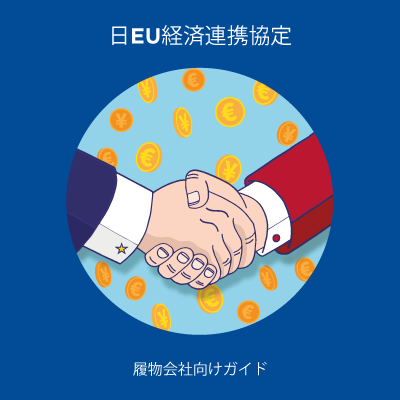Register to continue reading for free
EU-Japan Economic Partnership Agreement: Japanese Version

Japanese Version
The Economic Partnership Agreement between the European Union and Japan entered into force in 2019, creating the largest open trade zone in the world.
The Economic Partnership Agreement removes the vast majority of the 1 billion euros of duties paid annually by EU companies exporting to Japan. Once the agreement is fully implemented, Japan will have scrapped customs duties on 97% of goods imported from the EU. The agreement also removes a number of long-standing non-tariff barriers, for example by endorsing international standards on cars. It will also break down barriers for key EU food and drink exporters to 127 million Japanese consumers and will increase export opportunities in a range of other sectors. According to estimates by the European Union, the annual trade between the EU and Japan could increase by nearly 36 billion euros once the agreement is implemented in full. The EU and Japan have also agreed to set ambitious standards on sustainable development, and the text includes for the first time a specific commitment to the Paris climate agreement. The agreement also secures the opening of services markets, in particular financial services, e-commerce, telecommunications and transport.
On the other side, Japan will benefit from the immediate removal of tariffs on several products, such as the categories of leather footwear. For many others, EU custom duties on footwear will initiate with tariffs around 17% and will be eliminated over 10 years, in most instances, and with a small group of tariff lines facing a 15 years transition period until complete elimination is reached.
The new guide also includes detailed flow charts to understand how one can determine the Rule of Origin for Footwear.
A New Revolutionary Economic Treaty
Practical Application for Footwear
Annex (with the schedule for tariffs elimination in both parties)
The Economic Partnership Agreement removes the vast majority of the 1 billion euros of duties paid annually by EU companies exporting to Japan. Once the agreement is fully implemented, Japan will have scrapped customs duties on 97% of goods imported from the EU. The agreement also removes a number of long-standing non-tariff barriers, for example by endorsing international standards on cars. It will also break down barriers for key EU food and drink exporters to 127 million Japanese consumers and will increase export opportunities in a range of other sectors. According to estimates by the European Union, the annual trade between the EU and Japan could increase by nearly 36 billion euros once the agreement is implemented in full. The EU and Japan have also agreed to set ambitious standards on sustainable development, and the text includes for the first time a specific commitment to the Paris climate agreement. The agreement also secures the opening of services markets, in particular financial services, e-commerce, telecommunications and transport.
Footwear
Under the agreement, tariffs applied to European Union originating footwear entering Japan will be phased out over the next years. Tariffs on key leather products such as handbags will be eliminated over a decade, and the traditionally protected products with very high tariffs (27%), such as sports shoes and ski boots, will also be liberalised over the same period. On the other hand, with the entry into force of the agreement the immediate end of the quota system was applied for EU footwear exports which should bring significant gains for exporters of leather hides and skins.On the other side, Japan will benefit from the immediate removal of tariffs on several products, such as the categories of leather footwear. For many others, EU custom duties on footwear will initiate with tariffs around 17% and will be eliminated over 10 years, in most instances, and with a small group of tariff lines facing a 15 years transition period until complete elimination is reached.
The new guide also includes detailed flow charts to understand how one can determine the Rule of Origin for Footwear.
Contents
Executive SummaryA New Revolutionary Economic Treaty
Practical Application for Footwear
Annex (with the schedule for tariffs elimination in both parties)

